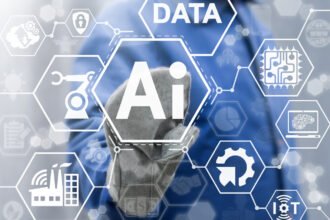As AI technology continues to mature and democratize, it’s being integrated into data analytics platforms and workflows in new ways
Artificial intelligence is changing many processes in different industries, from healthcare to manufacturing to sales. The IMF says it is set to transform the global economy, changing nearly 40% of jobs as it brings about automation and more efficient ways of completing tasks in different operations. Data is at the heart of all these improvements, and it is only natural for AI to usher significant advancement in the way people use data.
In 2024, data analytics trends have emerged or are solidifying as AI plays a prominent role in how data is collected, aggregated, analyzed, and presented. Here’s a rundown of some of the most notable developments in the field of AI-powered analytics.
Augmented Analytics
Augmented analytics entails the use of artificial intelligence and machine learning to boost human capabilities in discovering and scrutinizing data. Essentially, it allows anyone who knows how to use AI systems to conduct analytics on their own through an AI-powered platform or tool.
Augmented analytics plays a major role in enabling data analytics democratization, although not necessarily through a conversational user interface.
At present, augmented analytics solutions have service and software components. The service component includes data consultations, training, and continuous support. The software component can be either cloud-based or an on-premise software tool, although most AI algorithms are processed through the cloud. Edge AI is not yet feasible for a wide range of applications, hence not yet widely adopted.
The augmented analytics market is estimated to see 27.6% CAGR from 2022 to 2032. This remarkable growth is attributed to rising demand for customer-centric analytics, with organizations seeking to take advantage of various factors or variables that are usually not included in conventional analysis.
Gartner has published a comprehensive directory of reviewed and rated augmented analytics solutions. These solutions represent some of the best ways AI is bolstering data analytics and allowing ordinary users to analyze data in an intuitive manner, from data gathering to analysis and the development of a Data Science Machine Learning (DSML) model.
Conversational Data Exploration
Modern businesses are generating and consuming data at an accelerated rate given the rapid digitalization of organizations and the growing consumer adoption of digital transactions. As such, business intelligence teams are dealing with an explosion of data that can become unmanageable or not optimally utilized. Organizations could be accumulating tons of data without making good use of it.
With the help of generative AI, businesses can explore their data in a conversational manner. Users need not be experts in data analytics or business intelligence to make use of the information they have. They can simply run a chatbot or copilot and input questions or instructions to get the data and insights they need.
Some organizations refer to this as Generative Business Intelligence, or Gen BI. It leverages Gen AI to simplify BI and make it accessible to more users, especially those who are not proficient with business data analysis.
Gen BI can pull sets of data out of a massive data pool, interpret data, generate useful insights to facilitate decision-making and produce charts and other presentations on the fly. One example of this solution is Generative BI from Pyramid Analytics, which is designed to deliver insights in less than a minute, allowing anyone to conduct business data analysis and even create full dashboards from scratch, using just a few spoken descriptions.
In other words, Gen BI democratizes business intelligence. It allows those who are not part of the business intelligence team to conduct their own data discovery, consolidation, analysis, and presentation with the help of AI. This allows organizations to obtain sensible analytical inputs from various sources to arrive at more informed decisions and not be handicapped by role-based conventions.
AI-Powered Analytics Made Explainable
Artificial intelligence has already become commonplace. It has been integrated into various technologies used by everyday people, from cameras to IoT appliances and online customer service chatbots. Many people have been using AI unwittingly and without the understanding of how they work.
This lack of explainability of AI is deemed alarming by some sectors. There is fear that people are relying on machine intelligence they do not understand and that might not even be accurate. Most generative AI products at present like ChatGPT and Gemini continue to exhibit “hallucinations,” or the fabrication of unreal “facts,” like when they cite web page sources that do not exist. This is a serious cause for concern, especially when AI is being used to analyze data and generate insights to guide business decisions.
This is why there are several solutions designed to enable AI explainability. Google, for one, offers a set of Explainable AI tools and frameworks designed to help developers in understanding and interpreting their machine learning models.
Another example is Fiddler’s AI Observability Platform, which helps organizations with building trustworthy AI data solutions through interpretability methods and explainable AI principles such as Integrated Gradients and Shapley Values.
It is no longer enough for data analysis solution providers to tout their automation, natural language processing, computer vision, and large language models when they advertise their products. Organizations are also taking explainability into account to stay in control over their AI systems and reassure users that they are not dealing with randomly generated data regurgitations with hints of sense and cohesiveness.
Use of Synthetic Data
Synthetic data refers to artificially generated information designed to facilitate machine learning and analysis. It is the opposite of real-world data, which is based on information collected from actual events and entities.
Many are unsure about the usefulness of synthetic data, but it actually serves important purposes, especially in view of the rise of laws and regulations on data privacy and security. There are many restrictions on data gathering and use, which makes it necessary to avoid using real data like in the case of doing customer behavior analysis.
One study predicts that by the end of this year, approximately 60% of the data used in building AI systems will be synthetic. This may sound counterintuitive, but the reality is that it is difficult to build AI by solely relying on real-world data, especially if the data is supposed to represent broadly geographically dispersed realities. Synthetic data plugs the gaps in machine learning data and provides a significantly cost-effective and more controllable option.
Does it make sense to use synthetic data in data analytics? It certainly does in certain situations, particularly when it comes to exploring hypothetical scenarios. AI-powered analytics platforms can use synthetic data to examine processes and outcomes in situations for which there is no real-world data available.
Synthetic data does have its limitations in capturing real-world situations, actions, and objects. However, the benefits of using it for predictive data analytics easily outweigh the constraints. The differences become insignificant especially if the synthetic data comes from reputable providers such as Mostly AI, Betterdata, and Clearbox AI.
In Summary
Aided by AI, data analytics is continuing to improve, especially with the rise of trends that make it easy to perform data analysis, generate insights, and present structured information. Conversational data exploration, augmented analytics, explainable AI, and the use of synthetic data are helping to improve the speed and quality of insights, while also making analytics more accessible to non-technical business leaders.









